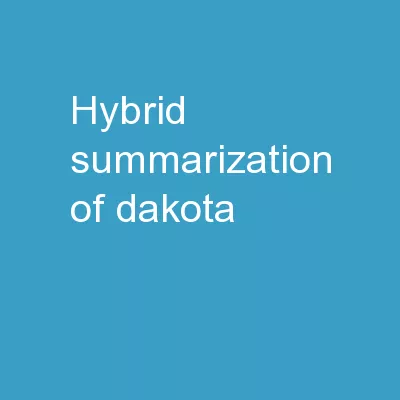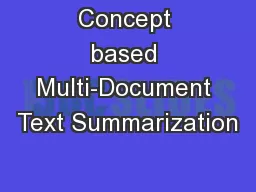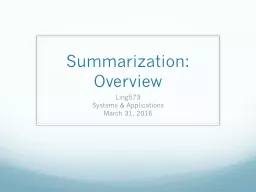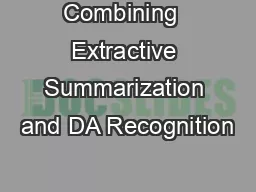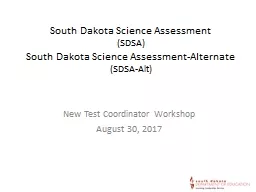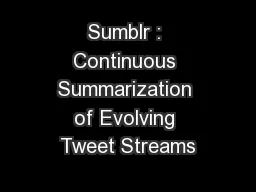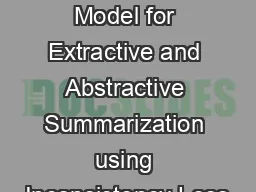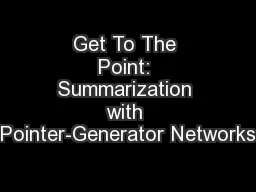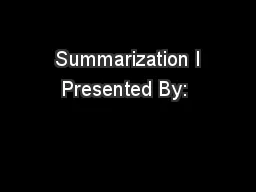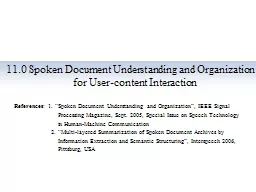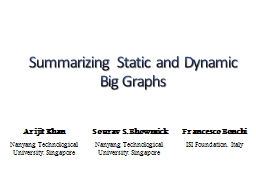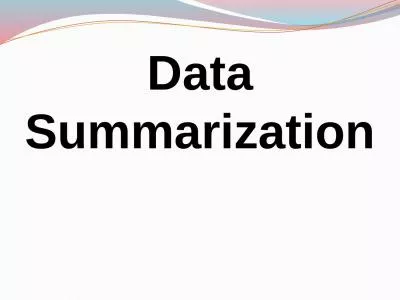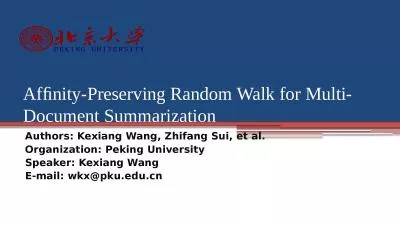PPT-Hybrid Summarization of Dakota
Author : jane-oiler | Published Date : 2019-02-04
Access Pipeline Protests NoDAPL CS 59844984 Big Data Text Summarization Report Xiaoyu Chen Haitao Wang Maanav Mehrotra Naman Chhikara Di Sun xiaoyuch wanght maanav
Presentation Embed Code
Download Presentation
Download Presentation The PPT/PDF document "Hybrid Summarization of Dakota" is the property of its rightful owner. Permission is granted to download and print the materials on this website for personal, non-commercial use only, and to display it on your personal computer provided you do not modify the materials and that you retain all copyright notices contained in the materials. By downloading content from our website, you accept the terms of this agreement.
Hybrid Summarization of Dakota: Transcript
Download Rules Of Document
"Hybrid Summarization of Dakota"The content belongs to its owner. You may download and print it for personal use, without modification, and keep all copyright notices. By downloading, you agree to these terms.
Related Documents

